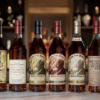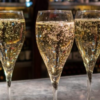Bubbly East Coast Prosecco Tasting! Discover with Wine Expert Alan Tardi Wed June 26th at New York Wine Studio
DC Heads to NYC for Prosecco! Taste and Discover with Wine Expert Alan Tardi Wed June 26th at New York Win ...
 DC, Taste Ultra Rare Bourbon: Pappy Van Winkle, Eagle Rare featured in Fundraiser from Sazerac Company
DC, Taste Ultra Rare Bourbon: Pappy Van Winkle, Eagle Rare featured in Fundraiser from Sazerac Company DC, Who does wine better: Politics or Hollywood? Clarendelle , Domaine Clarence Dillon Return as Official Wine Partner of 97th Oscars
DC, Who does wine better: Politics or Hollywood? Clarendelle , Domaine Clarence Dillon Return as Official Wine Partner of 97th Oscars DC’s Apéro, Napa’s Be Bubbly, NYC’s Coqodaq: Top 10 Bars and Restaurants for Champagne from Bureau du Champagne
DC’s Apéro, Napa’s Be Bubbly, NYC’s Coqodaq: Top 10 Bars and Restaurants for Champagne from Bureau du Champagne DC to TX for Gin: Self-made Billionaire John Paul DeJoria acquires Waterloo Gin
DC to TX for Gin: Self-made Billionaire John Paul DeJoria acquires Waterloo Gin DC Seizes Tonight: Larceny Kentucky Straight Bourbon Whiskey
DC Seizes Tonight: Larceny Kentucky Straight Bourbon Whiskey DC, Taste Ultra Rare Bourbon: Pappy Van Winkle, Eagle Rare featured in Fundraiser from Sazerac Company
DC, Taste Ultra Rare Bourbon: Pappy Van Winkle, Eagle Rare featured in Fundraiser from Sazerac Company DC, Who does wine better: Politics or Hollywood? Clarendelle , Domaine Clarence Dillon Return as Official Wine Partner of 97th Oscars
DC, Who does wine better: Politics or Hollywood? Clarendelle , Domaine Clarence Dillon Return as Official Wine Partner of 97th Oscars DC’s Apéro, Napa’s Be Bubbly, NYC’s Coqodaq: Top 10 Bars and Restaurants for Champagne from Bureau du Champagne
DC’s Apéro, Napa’s Be Bubbly, NYC’s Coqodaq: Top 10 Bars and Restaurants for Champagne from Bureau du Champagne DC to TX for Gin: Self-made Billionaire John Paul DeJoria acquires Waterloo Gin
DC to TX for Gin: Self-made Billionaire John Paul DeJoria acquires Waterloo Gin DC Seizes Tonight: Larceny Kentucky Straight Bourbon Whiskey
DC Seizes Tonight: Larceny Kentucky Straight Bourbon Whiskey